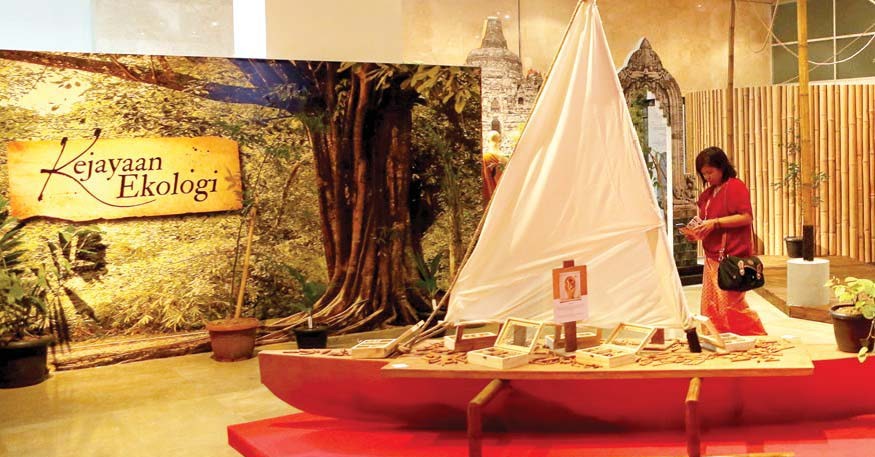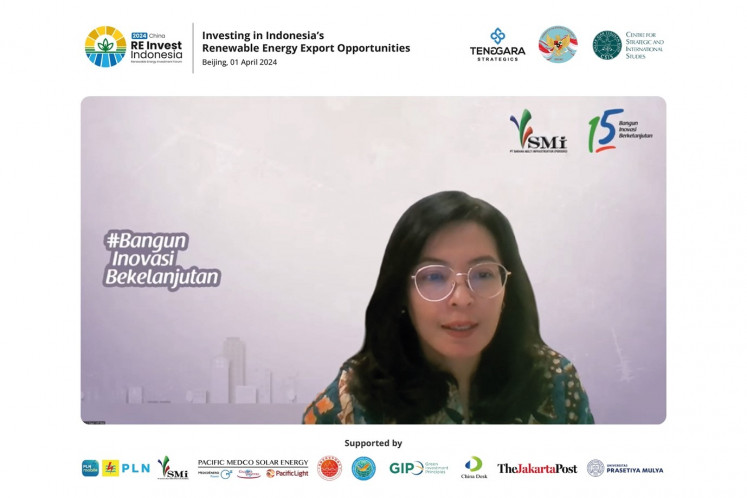RI’s biodiversity: In abundance, but not well-managed
Thanks to Indonesia’s geographical position, that lies along the equator, the country has a relatively constant tropical climate. Situated along the Ring of Fire, the archipelago is home to 28 percent of the world’s 452 volcanoes, which have contributed to the country’s fertile soil and rich plant biodiversity.
Change Size
 Maritime glory: A replica of a traditional boat is displayed at the Jalur Rempah (spice trail) exhibition, themed Sriwijaya Empire: The Great Maritime Empire. The exhibition, at the National Museum in Jakarta, will run until Nov. 28. (JP/Seto Wardhana)
Maritime glory: A replica of a traditional boat is displayed at the Jalur Rempah (spice trail) exhibition, themed Sriwijaya Empire: The Great Maritime Empire. The exhibition, at the National Museum in Jakarta, will run until Nov. 28. (JP/Seto Wardhana)
Sebastian Partogi
The Jakarta Post/Jakarta
Thanks to Indonesia’s geographical position, that lies along the equator, the country has a relatively constant tropical climate. Situated along the Ring of Fire, the archipelago is home to 28 percent of the world’s 452 volcanoes, which have contributed to the country’s fertile soil and rich plant biodiversity.
Indonesian Botanical Garden Foundation representative Didiek Setiabudi Hargono said the country’s soil grows 400 fruit species, 370 plant species, 70 tuber species as well as more than 55 types of spices.
“The numbers, however, haven’t revealed the exact figures of our plant biodiversity. Many regions, including Papua, haven’t been explored much by researchers. Maybe if we do more research, we can discover new plant species,” Didiek said.
Indonesia’s plant biodiversity actually drove the legendary global spice trade history, attracting traders and middlemen across Asia, the Middle East and Europe. The spice trade reached its peak when European traders arrived in Indonesia around the 15th and 16th centuries.
Due to the highly lucrative socioeconomic value of spices in those times, European traders were very aggressive, ambitious and, sometimes, delusional in their expeditions. Jack Turner writes in his book Spice: The History of a Temptation (2004) that “for the sake of spices, fortunes were made and lost, empires built and destroyed and even a new world discovered.”
From the colonial era onward, our biodiversity had turned into a mixed blessing: its abundance has made Indonesians complacent. Instead of implementing a more environmentally sustainable cultivation practice, we overexploit the plants.
As a result, our biodiversity is now in decline. This factor, coupled with our inability to manufacture value-added spices with proper packaging and branding, has ironically also caused Indonesia to lag behind Singapore, which has scarce natural resources but excels at manufacturing value-added products for spice exports.
In fact, Indonesia still imports spices to fulfill domestic demand.
“We need people who are not only adept at explaining theories or historical events, but practitioners who can help us devise strategies to maximize our biodiversity in a sustainable way,” Didiek said.
Such an effort is necessary, knowing that the country has unlimited potential regarding its vegetation and spices.
Professor Rusmin Tumanggor, a medical anthropology from Syarif Hidayatullah Islamic State University, said our versatile plant biodiversity could be used not only as food ingredients, but also as healing herbs.










